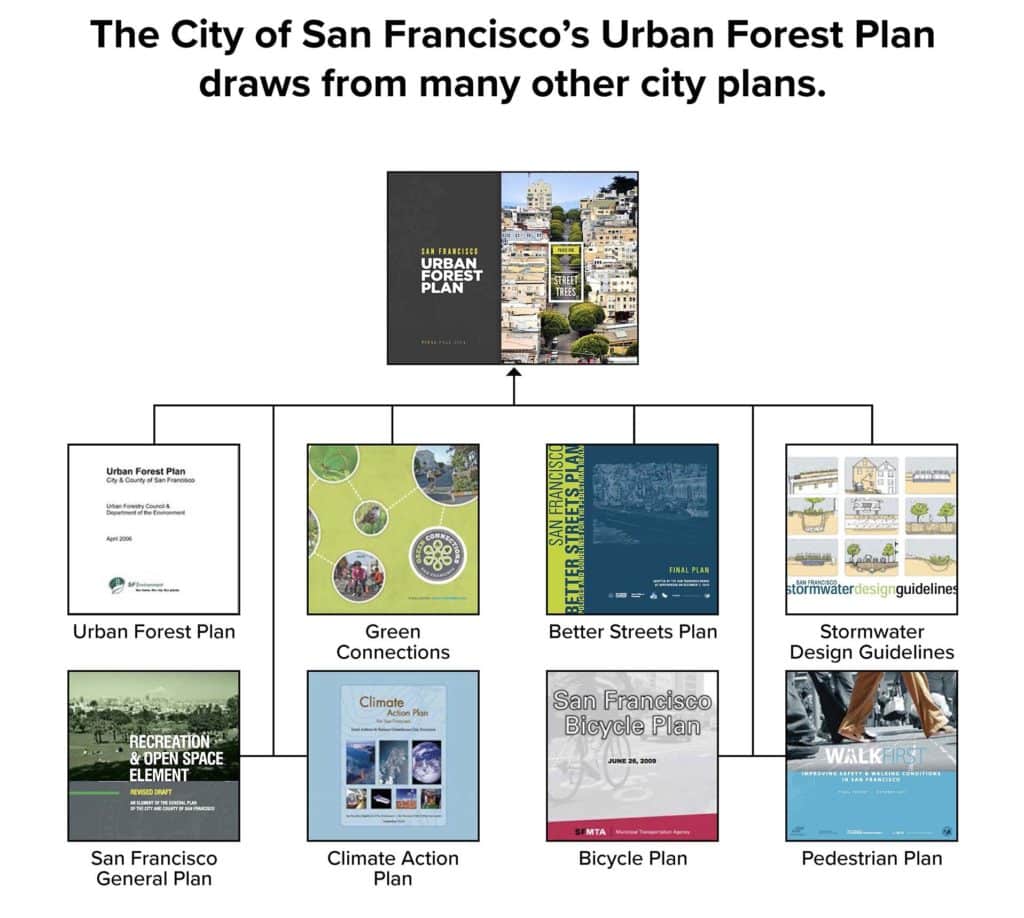Lesson
Part of: Urban Forests for Healthier Cities: Policy, Planning, Regulations, and Institutional Arrangements
Introduction to Planning for Urban Forests
BOOKMARK
Planning is the coordinated, organized, and ongoing process that guides decision-making, change, and growth in a community, city, region, or nation. (Elmendorf, 2007) A lack of planning risks misaligned efforts from various partners working on these issues in silos. When planning is not participatory or inclusive, policies and laws may be perceived as incohesive or arbitrary.
A few sound principles for planning include. (Schwab, 2009)
Urban trees and forests may be included in several city plans and documents. The table below shows some examples of relevant plans and typical content.
| Plan or document type | Common contents and distinguishing features |
|---|---|
| Comprehensive or master plan | Community plan, often extends decades into the future |
| Strategic plan | Outlines actions related to key issue(s), over shorter time frame than comprehensive plan |
| Climate action plan | Roadmap to help city reduce greenhouse gas emissions |
| Local or partial plan | Neighborhood-scale plan, establishes vision and land-use guidance |
| Site development plan | Guidelines for construction and development |
| Utility plan | Provides guidance on planning related to utility function, such as powerlines for energy supply |
| Urban forest management plan | Roadmap for urban forest design, management, and more |
| Transportation or mobility plan | Provides guidance for public transportation system and priority improvements |
| Green infrastructure plan | Plan related to nature-based solutions, typically with emphasis on stormwater management |
| Design and engineering manual | Plan that includes specifications for roads, bridges, and other infrastructure |
| Parks plan | Guides development and maintenance of park and recreational space |
